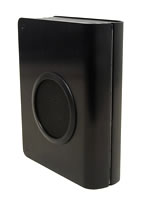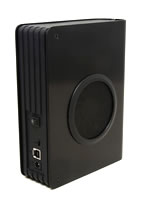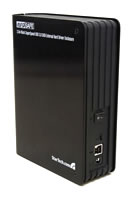It's not often that a computer interface remains relevant over the course of a full decade, but that is exactly what USB 2.0 has accomplished since its release in April 2000. Over the past few years however, our media-dominated culture has experienced incredible growth and file sizes have increased exponentially and the aging interface simply can't keep up in a number of tasks.
Other interfaces have challenged USB 2.0 over the years but none have been successful in dethroning it. IEEE FireWire was developed by Apple in 1995 and has seen several revisions, ultimately making it faster than USB 2.0. But outside of the high-end audio/video segment, FireWire has garnered little mainstream support. A similar fate can be expected for eSATA, a promising variation of the internal SATA connection that was introduced in 2004. The biggest reason these technologies never really caught on is because they are limited to storage needs only while USB is much more far-reaching.
It appears the only true successor to USB 2.0 is a revision of itself aptly called USB 3.0, dubbed "SuperSpeed" – see our feature article USB 3.0: What You Need To Know. USB 3.0 supports theoretical transfer rates of up to 5 Gbit/s.




USB 3.0 made its first appearance in consumer products this past January at the Consumer Electronics Show in Las Vegas. It's so new that no chipset manufacturer has implemented it yet into a southbridge chip. Instead today's boards that feature USB 3.0 use an add-in controller to accomplish this.
A majority of current USB 3.0 devices are all external hard drive enclosures which is what we'll be looking at today in the form of StarTech's 3.5" SuperSpeed USB 3.0 Hard Drive Enclosure. If your motherboard doesn't support USB 3.0, which is likely the case unless your computer is relatively new, StarTech also offers the 2-Port PCI Express USB 3.0 Card which utilizes a spare PCI Express slot.

Included with the enclosure is a universal power adapter with three different prong attachments, USB 3.0 cable, three adhesive foam pads and an instruction manual.
The universal power adapter is a nice feature that allows you to use the device when traveling in countries that have different wall sockets. The adaptor tips snap in place and can be removed by pressing the release button. Cable length stretches a full 6'.

The USB 3.0 cable is different on both ends from the traditional connectors used on USB 2.0 cables. The A end looks the same externally but has additional pins on the inside of the connector. The B side looks completely different with an added smaller area on the top of the cable. Cable thickness is also increased to compensate for the additional bandwidth.